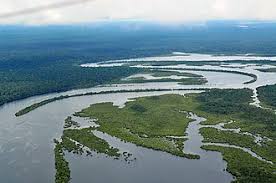Introduction
The Amazon River is one of the most significant rivers in the world, both in terms of its vast size and its ecological importance. Spanning over 4,000 miles across South America, it flows through several countries, including Brazil, Peru, and Colombia, serving as a vital waterway for local communities and a major contributor to the Earth’s biodiversity.
Ecological Importance
The Amazon River basin is home to approximately 10% of the world’s known species. The river and its tributaries support diverse ecosystems that include thousands of fish species, countless birds, mammals, and various plants. Notably, the river is crucial for fish migration and breeding. The annual flooding of the river also nourishes the surrounding forests, helping to create a unique habitat for countless species.
Challenges Facing the Amazon River
Despite its ecological significance, the Amazon River is facing numerous challenges. Deforestation, largely due to agriculture and logging, is threatening the biodiversity of the region. According to a report by the Amazon Environmental Research Institute (IPAM), deforestation rates surged by 9.5% in 2021 alone. Additionally, pollution from mining operations and urban areas is contaminating the river’s waters, leading to severe health risks for local communities.
The recent rise in climate change impacts also poses a threat to the river’s health. Higher temperatures and unpredictable rainfall patterns are affecting water levels, which can disrupt the ecosystems that depend on the river’s seasonal cycles.
Conservation Efforts
In light of these challenges, various conservation efforts are being initiated to protect the Amazon River and its surrounding ecosystems. Governments and environmental organisations are working together to implement sustainable practices and restore damaged areas. For example, the Amazon Fund, established by the Brazilian government, aims to combat deforestation by promoting sustainable development practices among local communities.
Conclusion
The Amazon River is not just a geographical landmark but a critical component of our planet’s ecology. The ongoing threats it faces remind us of the importance of acting swiftly to protect this vital resource. Continued efforts in conservation and advocacy are essential for ensuring the Amazon River can sustain its biodiversity and the communities that depend on it for generations to come.


